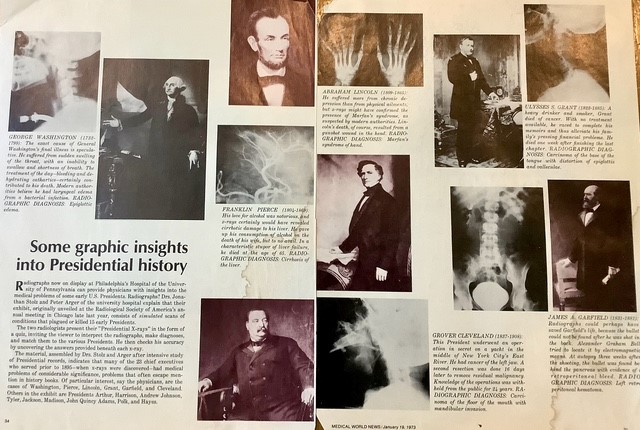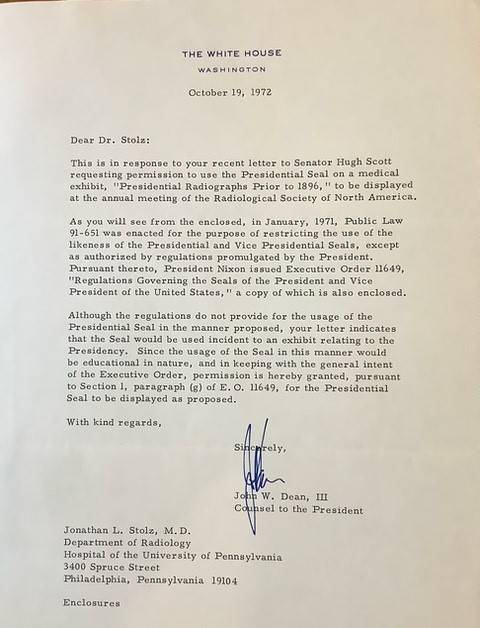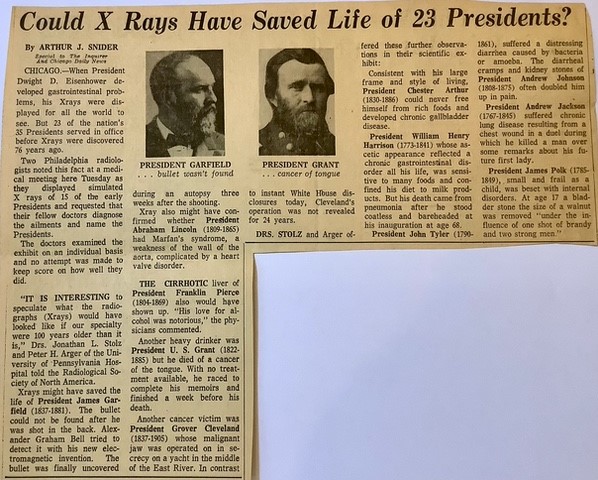Jonathan L. Stolz, MD, FACR
RSNA Exhibit and Watergate
A half century ago, an RSNA exhibit sparked an interaction with the Nixon White House and a Watergate figure.
In 1972, while a resident at the Hospital of the University of Pennsylvania in Philadelphia, I was co-author with another radiologist of a medical history display that was shown at the RSNA Annual Meeting in Chicago.
The presentation featured a series of radiographs that demonstrated known diseases of early U.S. presidents who lived before the discovery of the X-ray. An integral part of the display was a reproduction of the presidential seal. At the time, it was illegal for a citizen to publicly use the emblem.

RSNA Exhibit: Medical History Display, 1972
To depict the facsimile of the seal on the RSNA exhibit, we had to obtain advanced written consent. Senator Hugh Scott (R-PA) was a personal acquaintance; he wrote to the White House on my behalf to request authorization.

Letter from John W. Dean III, Counsel to the President, 1972.
I received a letter from the Counsel to the President, John W. Dean III, granting permission to use the seal (see above). He later made headlines as the whistleblower in the Watergate scandal; this year, he has reemerged in the half-century retrospective review of that famous incident.
After a 1990s change in the law, legal clearance to use the seal is no longer necessary; just download the image off the internet.
The RSNA exhibit itself received some national publicity. The experience also initiated many years of studying presidential history, which led to my current role as a regular columnist for the Virginia Gazette in Williamsburg, writing about different aspects of our nation’s commanders-in-chief.

Chicago Daily News (circa 1972)